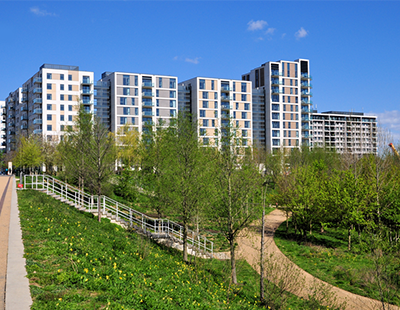Before the pandemic struck, Build to Rent (BTR) was undeniably the property market’s fastest-growing trend. Many expect it to recover quickly, too, as returns are solid enough to have nervous institutional investors happily ploughing money into what is seen as something of a safe haven.
With commercial, office, retail and industrial all set to suffer as a result of Covid-19, residential’s popularity among pension funds, private equity firms and other major financial players is likely to soar.
A trend decades in the pipeline
According to Martin, the rise of the still relatively nascent BTR industry is more than 30 years in the making, with the Thatcher government’s 1988 Housing Act introducing the Assured Shorthold Tenancy. This law, which effectively governs the PRS and those who operate within it, is best thought of as a rulebook containing the statutory rights and legal responsibilities of both landlords and tenants.
It was introduced to incentivise more investment in the private rented sector, which in the late ‘80s looked very different to now. Most tenancies took on the form of protected and statutory tenancies – which, in turn, created a legal system that heavily favoured tenants. Tenants effectively had the right to stay in a rented property indefinitely, passing the tenancy down to their relatives when they died. This made gaining back possession of a property very difficult for landlords.
As a consequence, landlords became far less willing to let their properties over fears that they’d eventually lose control of them. The Housing Act 1988 changed that, putting in play a number of safeguards to ensure that landlords had the right to gain possession of their property should they need to, provided they followed the procedures set out in the statute.
Ironically, for someone who is seen as the poster-girl for home ownership in Britain thanks to her controversial Right to Buy policy – which led to a mass sell-off of council housing and a subsequent housing shortage – it was Thatcher who strengthened the rights of landlords and set in motion the building blocks that would lead to BTR’s eventual success.
But the real turning point, according to commenters such as Dr Robin Goodchild – a special adviser at LaSalle Investment Management – occurred 23 years ago, with 1997 marking the election of New Labour and its decision not to reverse the AST and return to regulated tenancies.
Since that point, from Blair and Brown to Cameron, May and Johnson, there has been encouragement for big-money investors to get involved in the private rented sector – which has grown hugely in recent years to become the second biggest form of housing tenure, and the largest in London.
Early investment and early struggles
The first major milestone in BTR becoming the sub-sector we recognise today took place in 2009, in the dying days of New Labour. The ‘Private Rented Sector Initiative’, or PRSI, was the first government exploration of this sector – one which was already very well-established and successful in the US (where it’s known as multifamily). It was a request for expressions of interest from funds and developers.
“This was back ended into the Homes and Communities Agency (HCA; now known as Homes England) ‘Kick Start 2’ funding programme – which led to the funding of the ‘Berkeley/HCA’ portfolio which M&G and the Pru later purchased,” Martin says.
In 2011, meanwhile, Delancey (backed by Qatari Diar) purchased a 50% stake in the ‘Olympic Village’ apartments in Stratford, which later led to the formation of Get Living London.
“This was the first significant investment into a large residential rental portfolio, which furthermore wasn’t income producing at the time,” Martin states.
In 2012, Fizzy Living became the first ‘bespoke’ branded PRS operator, set up by Harry Downes and opening its first building in Canning Town. However, despite broad government support, investors weren’t investing in BTR and senior banks weren’t lending.
The Montague Report, led by Sir Adrian Montague, was commissioned by the government to review institutional investment into the PRS – and find out why investors remained wary and unwilling to take a leap of faith.
Read full article here: https://www.propertyinvestortoday.co.uk
Dominic Martin is a Senior Advisor to Global Apartment Advisors and a former member of the government’s PRS taskforce. He has also worked as a surveyor, an Associate Director at CBRE and as Operations Director at a number of BTR investor operators.
